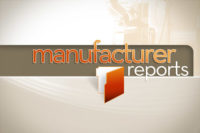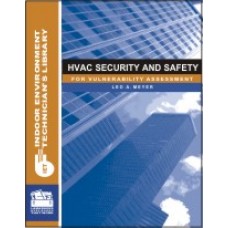Held at the University of Wollongong, the Australian Institute of Refrigeration, Airconditioning and Heating’s (AIRAH’s) Solar Heating and Cooling Workshop stoked the interest, ideas, and debate surrounding the emerging technology.
AIRAH CEO Phil Wilkinson, F.AIRAH, said, “This workshop was an extremely valuable opportunity to share experiences among some of the brave and brilliant pioneers of this new world of low-grid-demand mechanical building services technologies.
“Nothing makes more sense than a technology that converts the rays of the sun directly into cooling. It’s only going to become more important as the planet seeks to lower its emissions. Solar heating and cooling will definitely be part of the solution.”
Keynote speaker Dr. Stephen White, F.AIRAH, set the context for the day, providing an overview of solar cooling trends, drivers, and perspectives.
Inga Doemland, Stud.AIRAH, provided international insight, exploring the lessons learned on solar heating and cooling projects from the U.S. to Asia.
The workshop program covered three focus areas over the course of the day: desiccant evaporative cooling, residential systems, and case studies.
SOLAR TRIGENERATION
Conference committee Jeremy Osborne discussed a cutting-edge 100 percent solar-driven trigeneration project installed at the new engineering building of University of Technology, Sydney.
“This system enables the university to run a mini-power station, a solar cooling system, or a process-heating system at the click of a button,” Osborne said.
This system provides electricity from a 10 kW organic Rankin cycle (ORC) machine, chilled water from a 19 kW ammonia-water absorption chiller, and up to 60 kW from the condenser water of the ORC and chiller, and directly from the concentrating solar field, and an inter-connected flat-plate field.
It is fired from a concentrating trough field operating at up to 175°C with pressurized water.
“The electrical output from the ORC powers the building through an intelligent electronic processing system that accepts electric from DC solar PV array, and a wind turbine in DC,” Osborne said. “The electronics includes a flow battery for energy storage.”
Osborne discussed the process of design, the final design, barriers and difficulties in raising the project, installation and commissioning feedback, and the initial results from tuning the system.
SUPERHEATED STEAM REGENERATION
Dr. Mark Goldsworthy from the Commonwealth Scientific and Industrial Research Organisation (CSIRO) discussed a new take on desiccant wheel technology.
“A key benefit of desiccant wheel based solar thermal air conditioning systems is their ability to use very low grade heat,” he said.
“However, this leads to a low thermal coefficient of performance (COP) (typically ~0.5) and results in the need for a comparatively large solar collector area.
“The CSIRO has recently developed a desiccant-wheel-based system that has two thermodynamic stages and uses medium grade heat input at approximately 140°C to achieve COP greater than 1.
“The system uses a closed superheated steam loop to regenerate a high-temperature stage desiccant wheel, with condensation and purge heat recovered and combined to provide regeneration heat input to a lower-temperature-stage desiccant wheel.”
TELECOMMUNICATIONS COOLING
VK Phoon, M.AIRAH, presented on using solar cooling for telecommunications purposes. He explained that about 44 percent of Telstra’s energy costs are derived from air conditioning, with 70 percent of that energy expenditure being used to cool recirculated air.
With a need for reduction in energy consumption associated with air conditioning, Telstra is investigating the application of evaporative cooling technologies across a number of its facilities.
Phoon said, “The success of adiabatic cooling is dependent upon the local regional weather conditions, as supply temperatures are limited by the ambient humidity condition.
“Milder drier climates and low number of hot days provide ideal conditions for adiabatic cooling systems as an extension of a supported economy cycle.
“Careful research into weather conditions for potential sites is required to determine whether evaporative cooling initiatives are viable, or an unnecessary capital expenditure.
“A number of adiabatic cooling technologies are currently being trialed by Telstra, with estimated payback periods as low as four years. These technologies have a strong potential for future development and large-scale implementation.”
GUIDED TOUR
In the second half of the day, the University of Wollongong’s Professor Paul Cooper, M.AIRAH, led a tour through the university’s Sustainable Buildings Research Centre (SBRC) and the Illawarra Flame House, assisted by staff.
A unique, custom-designed research facility, the SBRC houses test rigs for development and testing of photovoltaic thermal systems and phase-change materials.
The Illawarra Flame House is the university’s world-beating Solar Decathlon entry, which saw Team UOW take out the competition in 2013 with the highest score ever recorded.
It demonstrates the retrofit of advanced HVAC and control systems into a typical Australian 50s-era fibro home.
For more information, go to www.airah.org.au/solarworkshop2015.
Content for the European Spotlight is provided courtesy of Refrigeration and Air Conditioning Magazine, London. For more information, visit www.racplus.com.
Publication date: 8/3/2015










